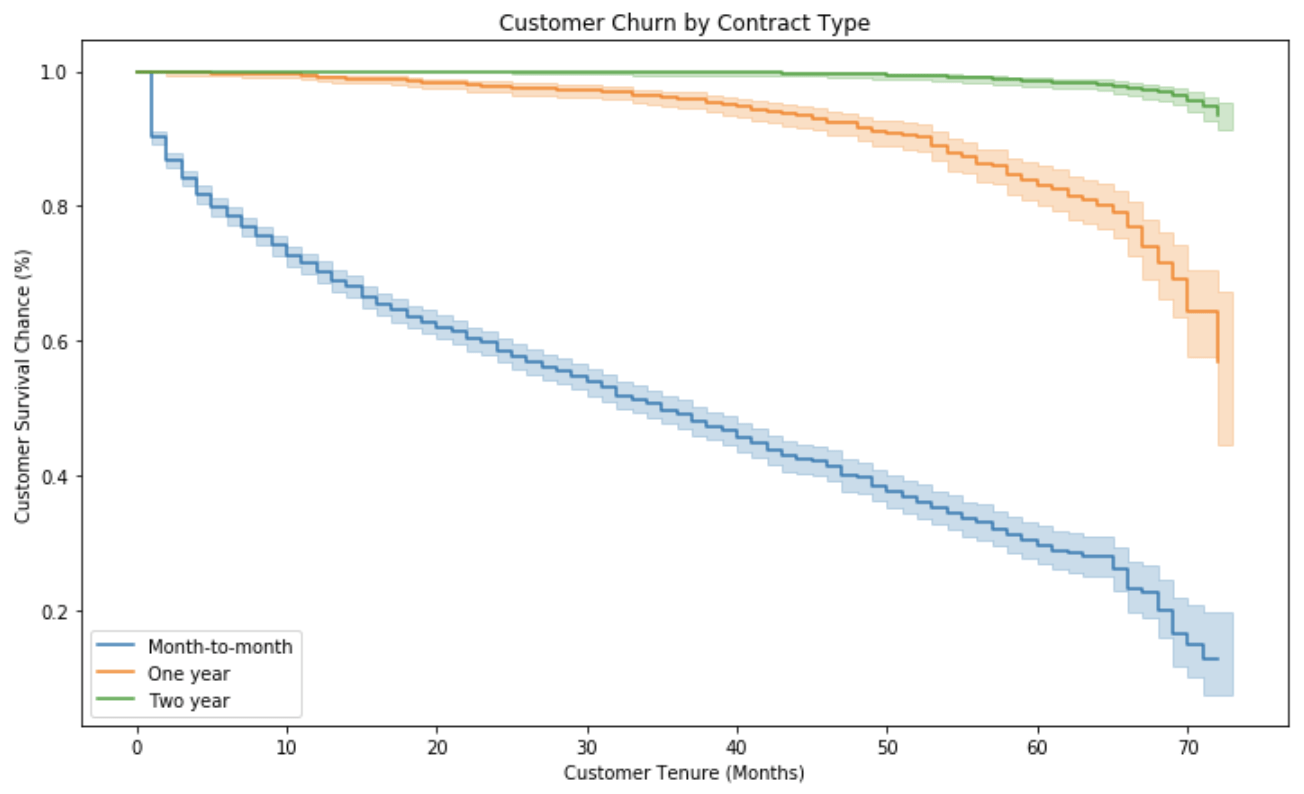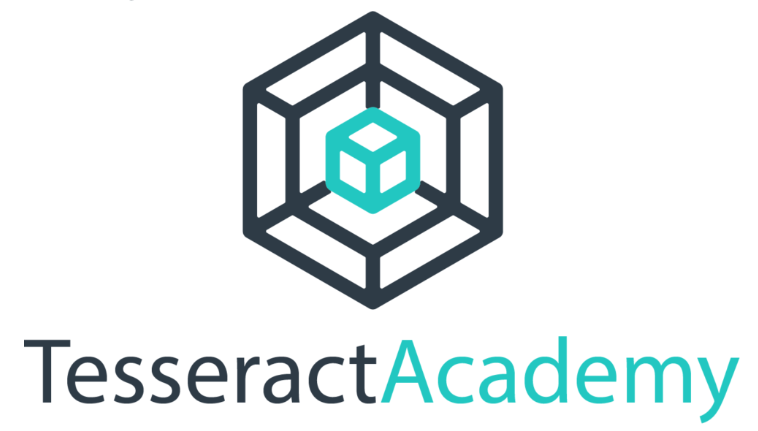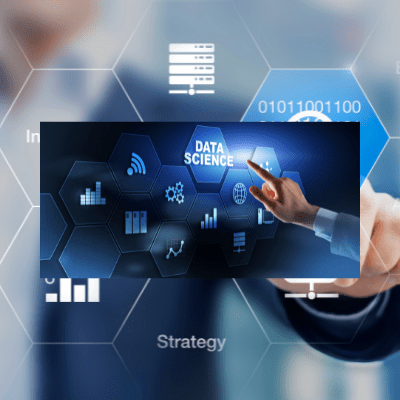The Tesseract Academy is committed to educating decision makers on topics such as data science, AI and blockchain. This is why we decided to do several surveys and research reports over the last year to look into organizational culture as well as understand the most common problems and attitudes towards data science and AI in organisations. We also looked into data-driven product development, project management and customer churn prediction. We have summed up the results of the five reports below.
Tesseract Report: Data-driven Product Management is the 2022 trend for product managers

Key Findings: “Data science is clearly part of the future of product management. This will lead product managers acquiring skills in basic data analytics and statistics, whereas data scientists will be expected to have a more in-depth understanding of product management and development. Organisations are looking into a future of cross-functional teams, with individuals picking up skills in related areas, instead of just overspecialising in a single domain.”
Report Summary:
The process of overseeing a product from conception through end-of-life is known as product management. Product managers are in charge of the whole lifespan of a product, which includes developing the product strategy, overseeing the product roadmap, and working with stakeholders to make sure that everything comes together as planned.
According to the product’s survey of experts, they come to know that the use of data science in product management is significant, and experts predict that this use will increase over the next years. Data analytics reveals that, of 100 respondents, 40.7% believe that data analytics is essential to the process and data science will become increasingly significant in product management, according to 29.6%. Moreover, the fact that no participant stated that data scientists should not understand product management was an intriguing finding.
Actually, about 60% think data scientists ought to be familiar with certain areas of product management. Out of 27 replies, 77.8% agreed that the product manager should be familiar with fundamental data analytics. The top three arguments for why data science would be useful in product management, according to the 26 replies we received, were as follows: creating new products (42.6%), experimenting with new features (50%), and improving current goods using data-driven insights (88.5%).
Link to full report: https://tesseract.academy/data-driven-product-management-is-the-2022-trend-for-product-managers/
Tesseract Report: Customer Churn Prediction Through Data Science and AI

Key Findings: “Predicting customer churn is a hugely valuable proposition for any company and it is very possible to predict customer churn. There are two core deliverables: A determination of factors that contribute to churn and secondly predictive model that predicts which customers are at higher risk of churn and when they are about to churn.”
Report Summary:
A significant issue in the insurance sector is customer attrition. Insurance businesses cannot overlook the significant financial repercussions of client attrition. It’s critical to comprehend what leads to client turnover. There are two sorts of churn in terms of customers leaving: active and passive. When a customer cancels their policy before it expires, this is referred to as active churn. When someone merely decides not to renew their insurance, this is known as passive churn.
Since many classification models may provide you with a probability that can be regarded as a risk score, a classification model has the benefit of being easy to comprehend. This suggests that the risk of someone churning is inversely proportional with the hazard. For this issue, survival models are more beneficial and alluring. As the name implies, survival models are widely employed in medicine to mimic patient survival.
Using a survival, we may explicitly define relative risk or the risk of one client in comparison to another, as well as this risk over time. The results shows two primary deliverables: A determination of the elements that influence churn; and prediction algorithm that foretells which clients are more likely to leave and the precise moment when they are about to do so.
Link to full report: https://tesseract.academy/tesseract-report-customer-predicting-churn-through-data-science-and-ai/
Tesseract Report: Project management for AI and data science

Key Findings: “While the space of project management for data science and AI has evolved, there is still lots of work to be done. In order to successfully implement data science and AI projects, companies need to have the right processes in place, and the stakeholders really need to understand the scope and the deliverables of a data science project.”
Report Summary
Any firm must perform the crucial task of project management, which is made much more crucial when it comes to AI initiatives. This is so because AI initiatives are frequently complicated and include several participants with various objectives. The decision to consult with several project management specialists to get their advice on the best ways to handle data science and AI initiatives.
The majority of participants said that they are not utilizing any methodology when asked whether they are using any particular methodologies created for data science and AI. Few people appear to be using CRISP-DM and the Team Data Science Process. Only 29.4% of respondents confidently say “Yes” when asked if the present project management approaches are sufficient for data science initiatives. The existing strategies seem to be lacking something. This may be because software development differs from data science and AI in several ways, making it challenging for approaches created for one field to transfer directly to another.
The fact that 88.2% of participants said that the current project management strategies for AI and data science should be enhanced further supports. The participants provided a range of answers when asked about the largest problem in project management for AI and data science. Among the explanations given were: Executives can’t fully understand data science since it is obscure; ensuring that deadlines are adhered to Data strategy and data quality; Results in data science experiments cannot be guaranteed; Establishing KPIs.
Despite the fact that the field of project management for data science and AI has advanced, more work still needs to be done. Companies must have the appropriate processes in place and stakeholders must truly get the scope and deliverables of a data science project in order to effectively deploy data science and AI initiatives.
Link to full report: https://tesseract.academy/tesseract-report-project-management-for-ai-and-data-science/
Tesseract Report: Organisational Culture in the Post-Covid World, the 4-day Workweek, and Hybrid Work

Key Findings: “Trends like hybrid working, are here to stay. Some others, like the 4-day workweek are popular, but it’s not clear whether they can be implemented successfully. It’s clear that organisational culture plays a huge role in the success of any organisation, especially in attracting and retaining top talent.”
Report Summary
The computer industry and a large portion of professional life were shaken by COVID-19. Hybrid working, remote working, and the 4-day work week are just a few of the new trends that seem to have evolved. It appears that the majority of respondents think that the CEO (45.8%) or the c-suite is responsible for shaping organizational culture. 37.5% of respondents indicated that midlevel managers may guide organizational culture. Most responses to questions concerning organizational culture’s advantages for three organizations centre on three primary points: A higher rate of staff retention (80%); more satisfied workers (68%); Top talent attracting (56%). Out of 25 replies, 56% strongly disagree with retaining competition advantage, 24% agree, and 12% are impartial.
Almost, 48% of respondents who were questioned about the role of culture in employee wellbeing agreed that it was a very significant component. Only 28% of respondents were indifferent on the topic, therefore it appears that roughly 60% of respondents think their company’s organisational culture is helping with post-COVID rehabilitation. The vast majority of participants appear to be employed in a hybrid environment. Of the 25 replies, 68% were hybrid, 16% were remote exclusively, and 16% were office only.
Most individuals would want to work hybrid if given the option, and it appears that 80% of people think that this would also be the case in the future. At least 50% of the respondents would like to work full-time for 4 days per week, even though the bulk of them work full-time (more than 80%) for 5 days per week. Only 40% of respondents think that most businesses will provide a 4-day workweek alternative. Perhaps working just four weeks is insufficient for many businesses. Only 8% of people think that a company’s culture does not have a significant impact on its present financial situation.
Link to full report: https://tesseract.academy/tesseract-report-organisational-culture-in-the-post-covid-world-the-4-day-workweek-and-hybrid-work/
Tesseract Report: Data Literacy and Science Challenges in Businesses

Key Findings: “The majority of employees believe that their organisation is not data literate enough and that in order to advance they will need to become more data literate in the future. Data ethics was also a concern and as AI becomes more and more important in our society, we will have to make sure that it is used ethically.”
Report Summary:
Two of the most crucial skills for any organization to possess are data literacy and data science. However, organizations find it challenging to acquire these abilities since both data literacy and data science present unique difficulties. The first issue is the discrepancy between the demand from businesses and the availability of qualified data scientists. Because there aren’t enough professionals in this industry, businesses must contend with one another for these limited resources. The absence of data literacy and data science training is the second problem. Sixty-six percent of participants (66.6%) think they understand data literacy well or completely.
However, more than 50% of the participants said their firm or organization isn’t data literate enough when asked about it. Some of the key justifications offered for why the relationship between the product team and data science is problematic include the following: Data scientists don’t understand the product; product people don’t understand data science; corporate culture. The vast majority of interviewees expressed their dissatisfaction with the management of AI programmers’. This was principally caused by two factors.
The first is that traditional methods like AGILE do not work well with data science. The second problem is that the company’s data scientists are hesitant to follow a methodology. On the overall growth of the firm, both of these might have a big effect. The majority of responders said that their present organizational culture was heavily data-driven. Still, 27.8% of respondents claimed that their organization’s culture is not at all data-driven.
All participants (100%) agreed that having a data-driven organization is necessary to remain competitive and outperform competitors.
Link to full report: https://tesseract.academy/tesseract-report-data-literacy-and-science-challenges-in-businesses/
How The Tesseract Academy Can Help You?

If you have any questions or suggestion, feel free to get in touch. We provide both consulting services, as well as online and in-person workshops on all the aforementioned topics, specialising in decision makers with no technical knowledge. We also offer a range of free courses, webinars and frameworks to assist anyone on their AI or blockchain journey. Whether you are a CEO, an entrepreneur or a manager, the Tesseract Academy can help you and your organisation fully understand and implement data science and AI.

























